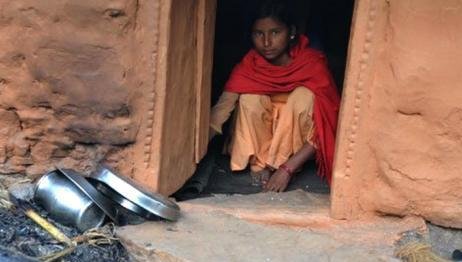KATHMANDU, Nepal (GPI)-- Prekchhya Sharma, who just turned 12, was locked in a room inside her home for 10 days recently during her first menstruation. Her mother told her that, in accordance with Hindu tradition, she must not look at the male members of her family or at the roof of her house in the heart of Kathmandu, Nepal’s capital. Her mother didn’t allow her to leave her room and blanketed it with heavy curtains to block any light from entering. “I am kept here because I started menstruating,” Prekchhya says. Durga Poudel, 18, who lives in Sukedhara , a suburb of Kathmandu, says she’ll never forget her first menstruation when she was 14. She was spending her winter holiday at her uncle’s house in Dhading, a neighboring district of Kathmandu, when she started her menstrual cycle for the first time. Her aunt immediately covered her face with a blanket and made her walk for 25 minutes to her other aunt’s house. With her vision obstructed, Poudel stepped into potholes and got caught in brambles. Her legs became wobbly, and her aunt’s grip on both her hands started to hurt after a while. “I was there to enjoy my vacation, but I was taken to a place I didn’t know at all,” she says. “I cried out loud when my aunts left me there alone.” It was mid-January, so it was cold, Poudel says. The adults of the house asked her to bathe with cold water well before dawn, and she soon had a fever. But nobody paid any attention. “All my days there, I spent crying,” Poudel says. Poudel’s aunt asked the teenager to spend the first 10 days after her first menstruation in a closed, dark room. She was not allowed to leave her room during the day. In accordance with Hindu tradition, her family does not believe that menstruating girls should touch books, so she was not able to study. She was not allowed to touch anything except for her own bed and the plates and glasses she used for eating. She was also not allowed to talk to anyone. Isolation of girls during their first menstruations is a Hindu custom in cities and villages of Nepal, but some scholars say rituals are not all rooted in scripture. Still, parents and guardians continue the practice because of tradition and societal pressure. Nongovernmental organizations and health professionals call for increased education and counseling about menstruation. International and local organizations and the government are working to raise awareness but admit the need for expanded efforts. The Hindu tradition to isolate girls during their first menstruation is prevalent in districts throughout Nepal – including Kathmandu – though it is more common in rural areas, according to the Adolescent and Youth Survey carried out by the Ministry of Health and Population in 2011. The survey included 5,363 girls between ages 10 and 24 in Nepal’s three ecological regions. The survey found that 7 percent of the girls stayed in a dark room within the house, and 4 percent stayed in a nearby shed far from home during their first menstruation. Similarly, 30 percent stayed in a separate room where they were not allowed to be touched until the purification process a week later. “This tradition is prevalent among the Hindus, especially Brahmin and Chhetri communities,” says Anita Pradhan, gender and communication officer in Nepal for WaterAid, an international charity that works to promote safe drinking water and sanitation. “But other ethnic groups living nearby are also influenced by this tradition.”
Advertisement















